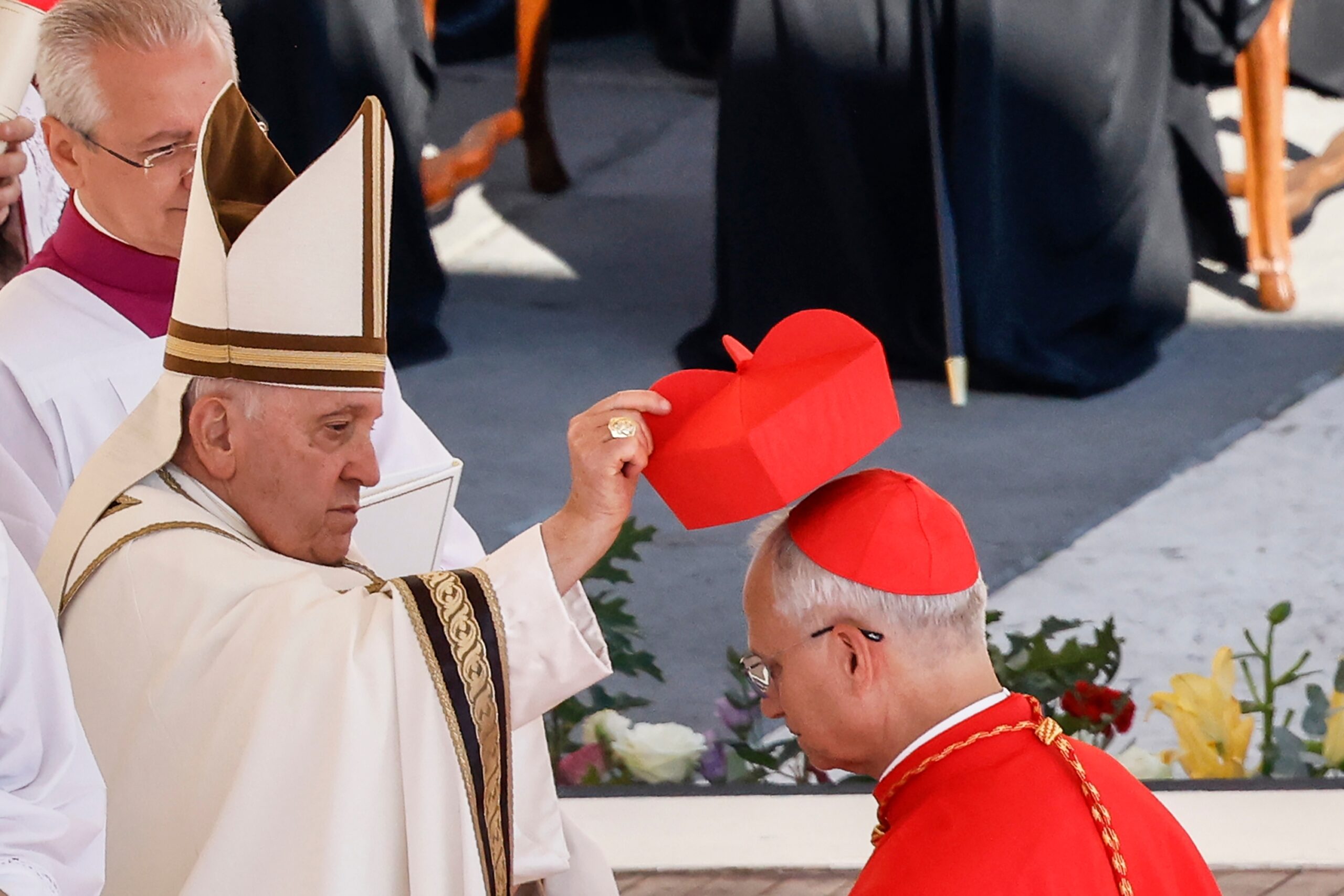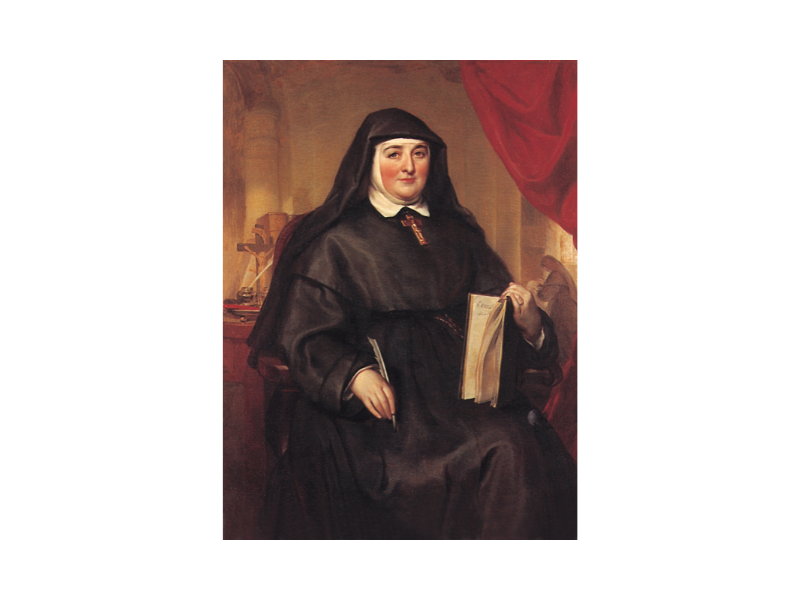
MARY AIKENHEAD’S SILENT GIFT IN THE LIGHT OF LIFE
WITHOUT SUNSET
It was April 18, 1844, a bright spring Thursday. In Dublin, the city that Mary Aikenhead had loved and served deeply, the sky opened clear as a promise. The first rays of sunlight filtered through the light curtains of St. Vincent’s convent-hospital, gently resting on the stone floors and silent walls, like gentle fingers brushing the life gathered within those walls. The morning air carried the fresh scent of awakened earth, and the birds’ song seemed unknowingly to intone a hymn of victory: life, once again, triumphing over the darkness of winter. It was Eastertide, and Mary’s heart was filled with it, like a lamp guarded in the night.
Illness had now hollowed out her body, robbing her of strength, but it could not extinguish the light that continued to burn within her. Confined in that room that knew every one of her breaths, far from her spiritual daughters scattered across convents in Ireland, England, and Australia, Mary did not allow herself to be overcome by discouragement. Each morning, as the new day filtered through the curtains of her room, Mary recognized in that light the sign of the empty tomb: even though her limbs were weary and her breath short, her soul knew that the rising sun never deceives those who have believed in the Cross. Every dawn was, for her, a silent echo of the Resurrection.
The spirit of Easter burned within her like embers beneath ashes. She had long contemplated and meditated on the Passion of Christ: the sleepless nights in the Garden of Olives, the weight of the Cross, the humiliation of Golgotha, the abandonment of Gethsemane. And she knew that Way of the Cross was not far from her own life. She too, nailed by a body that no longer responded, experienced the silence and darkness of Good Friday. But like the Master she had loved and served, she carried in her heart the certainty that the third day would come and that no tomb could contain Life.
That morning, with fragile yet determined hands, she had taken her pen to write to Mother May Agnes, her dear spiritual daughter who was in Preston. Every word she traced was like a golden thread binding her to her, beyond distances, beyond weariness, beyond the limits imposed by illness. In those simple yet profound lines, she poured out the wisdom matured in suffering and prayer: “We ought to keep up the Eastertide in spirit and in truth.” For her, it was not merely a liturgical reminder, but an interior commandment: to live each day as if the stone had just been rolled away from the tomb, as if the voice of the Angel still echoed, announcing that death had been conquered.
For Mary, Eastertide was a way of dwelling in suffering without being crushed by it. She looked at the Cross not as a failure but as the secret womb of new Life. She knew that the Resurrection does not erase wounds but transfigures them: the scars remain, but they no longer bleed; pain remains, but it becomes a path of communion and love offered.
Thus, even confined to her room, she continued to give of herself. Her spiritual daughters were never absent from her thoughts. Like a vigilant mother watching over her children at night, she followed each step of the new foundations she was preparing with loving care. In those days, her heart was closely following the opening of the convent in Clarinbridge, scheduled for July. She intended to send her beloved first assistant, Mother Magdalen McCarthy, to support the new community. She knew that departure would leave her with a painful void, like a branch cut away, but also that every sacrifice, when offered with love, blossoms and bears fruit.
That April Thursday, as she put away the letter intended for Mother May Agnes, a sister entered gently into her room carrying a vase of fresh flowers, sent by a grateful family for the care received during Easter. Their subtle yet intense fragrance sweetly enveloped the room, mingling with the birds’ song and the prayerful silence of the sisters. Mary allowed herself to be fully reached by that moment: the fragrance of flowers, the light filtering through the curtains, the murmuring of life that continued flowing around her.
And in that moment, like a quiet song rising from her heart, resurfaced the certainty that had sustained each of her days, each waiting, each sacrifice: Christ is risen; death is conquered, joy is eternal. It was not a thought to keep to herself, but a proclamation to continue sowing, because Life, when given, knows no sunset.
__________________________________________________
REFLECTIONS
“We ought to keep up the Eastertide in spirit and in truth.”
In this simple phrase that Mary Aikenhead entrusted to a spiritual daughter, the entire thread of her life is summed up.
The Venerable Mary did not live Easter only on serene days, but always—in health and in illness, in toil and in joy. Above all, when the cross of suffering grew heavier, she sought to embrace it with trust and courage. She embraced her cross, transforming it into a silent altar from which she continued to offer love and hope.
This is the holiness Pope Francis describes in Gaudete et Exsultate when he reminds us that the saint is one who “does not settle for a mediocre existence” but embraces the cross, living it with love and fidelity.
Mary Aikenhead teaches us that living the spirit of Easter means choosing each day to believe that Life blooms from the Cross, that every pain accepted becomes light for others, and that true joy is born when the heart remains faithful, even in the night.
___________________________________________
PRAYER
Lord Jesus,
You who conquered death and bestowed upon the world the light of everlasting Life, teach us, following the example of Venerable Mary Aikenhead, to live each day in the spirit of Easter.
Grant us a heart that is not overcome by fatigue and fragility, that knows how to embrace the cross with trust and courage, recognizing in trials as in joy the certainty that You live and Your victory will never fade.
Like Mary, make us capable of keeping up the Eastertide in spirit and in truth, of seeing the light even in the darkest nights, of transforming silence, illness, loneliness, and every wound into an offering of love for the good of others.
Teach us to understand that holiness is not made of great deeds, but of small daily “yeses”, of hidden fidelity, silent self-giving, of a hope that never fades.
Ignite in us, as in Mary, the certainty that from the Cross springs forth Life, that every sacrifice offered with love generates a future, that every night holds within it the dawn.
May our lives, like hers, be a humble and radiant sign that joy will have no end, because You, Lord, have risen, and death is conquered forever.
Amen.







